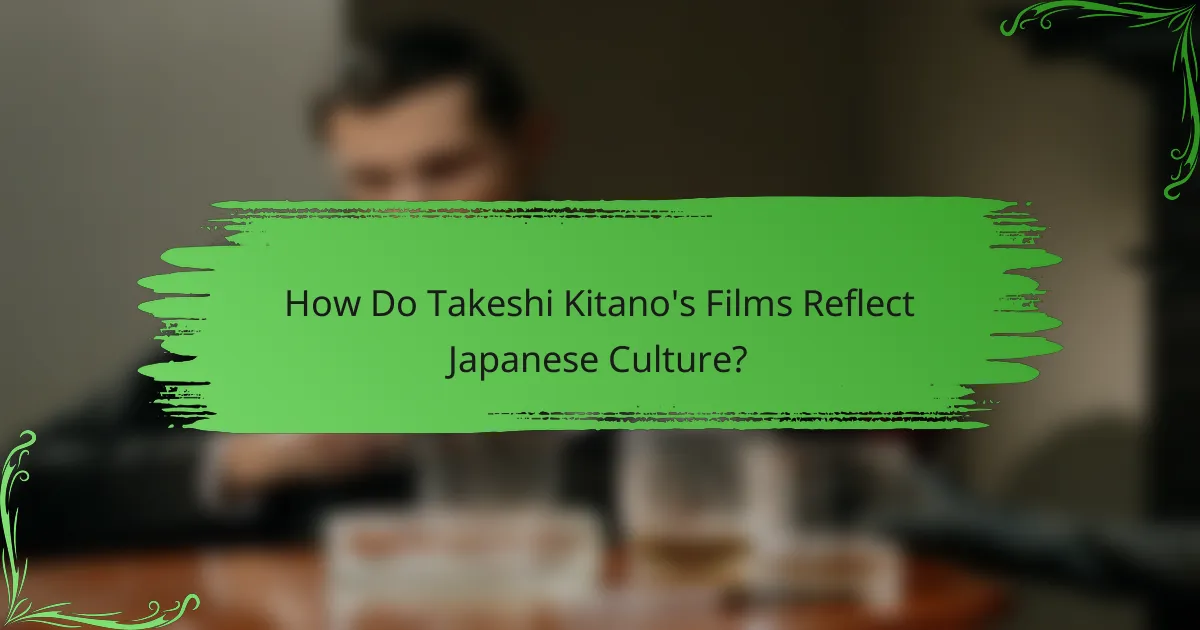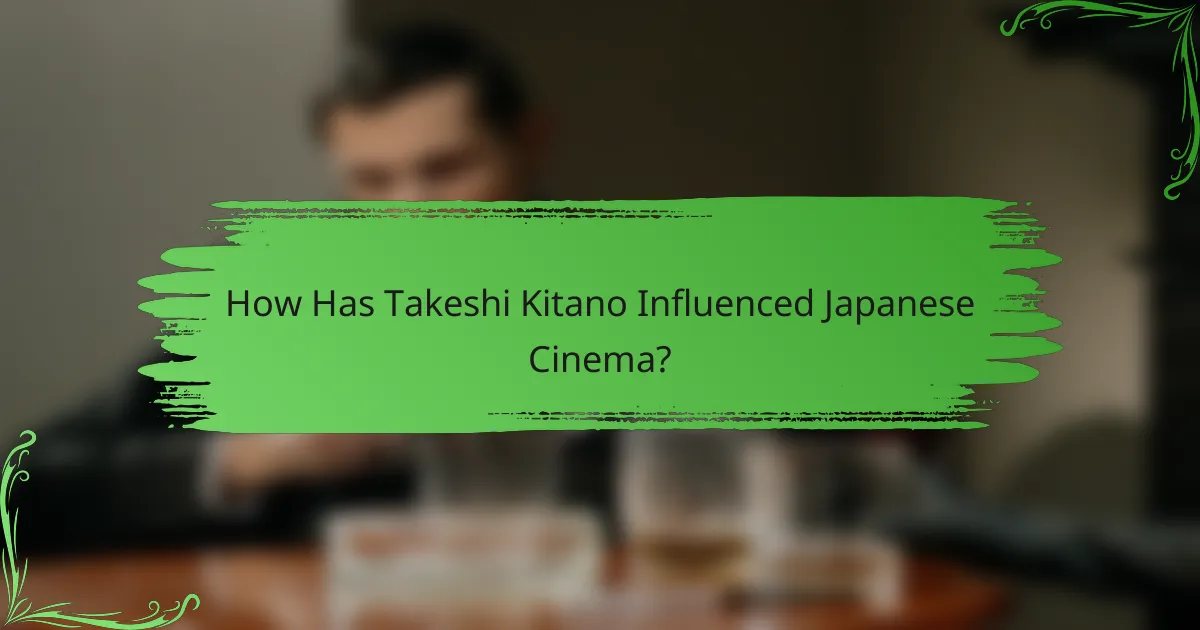Takeshi Kitano, a pivotal figure in Japanese cinema, is renowned for his distinctive storytelling and visual aesthetics. His films, which artfully blend humor, violence, and deep emotional themes, offer a profound insight into Japanese culture and society. Through his unique lens, audiences can explore complex themes such as isolation, loyalty, and the intricacies of human relationships.
![]()
What Are the Iconic Movies by Takeshi Kitano?
Takeshi Kitano, a pivotal figure in Japanese cinema, is known for his unique storytelling style and visual aesthetics. His iconic films often blend humor, violence, and deep emotional themes, making them essential for understanding Japanese film culture.
Hana-bi (Fireworks)
Released in 1997, “Hana-bi” is one of Kitano’s most acclaimed works, winning the Golden Lion at the Venice Film Festival. The film follows a police officer dealing with personal and professional crises, showcasing Kitano’s signature blend of violence and beauty.
The narrative is punctuated by stunning visuals and a haunting score, emphasizing the emotional weight of the protagonist’s journey. “Hana-bi” serves as a perfect entry point for those looking to grasp Kitano’s cinematic style.
Sonatine
Kitano’s minimalist approach and the film’s slow pacing invite viewers to reflect on the characters’ choices and the nature of their existence. “Sonatine” is often regarded as a turning point in Kitano’s career, marking his transition to more introspective storytelling.
Outrage
In “Outrage,” released in 2010, Kitano returns to the yakuza genre with a focus on the brutal power struggles within organized crime. The film is characterized by its graphic violence and intricate plot, showcasing the complexities of loyalty and betrayal.
This film stands out for its unflinching portrayal of the criminal underworld, making it a compelling watch for those interested in the darker aspects of Japanese society. “Outrage” exemplifies Kitano’s ability to blend action with deep moral questions.
Zatoichi
Kitano’s “Zatoichi,” released in 2003, reimagines the classic blind swordsman character in a vibrant and stylized manner. The film combines action, humor, and music, creating a unique cinematic experience that pays homage to traditional samurai films.
The choreography of the fight scenes and the integration of dance elements highlight Kitano’s artistic vision. “Zatoichi” is not only entertaining but also serves as a commentary on the nature of violence and justice.
Kids Return
Kitano’s use of non-linear storytelling and character-driven narratives makes “Kids Return” a poignant reflection on youth and the passage of time. This film is essential for understanding the emotional depth present in Kitano’s body of work.

How Do Takeshi Kitano’s Films Reflect Japanese Culture?
Takeshi Kitano’s films serve as a lens through which viewers can understand various aspects of Japanese culture, including themes of isolation, violence, and humor. His unique storytelling style captures the complexities of Japanese society, often blending stark realities with subtle nuances.
Exploration of Isolation
Isolation is a recurring theme in Kitano’s work, often portrayed through characters who experience profound loneliness despite being surrounded by others. This reflects a broader aspect of Japanese culture, where social pressures can lead to feelings of alienation.
In films like “Hana-bi” and “Kikujiro,” characters navigate their solitude in ways that resonate with audiences. The use of minimal dialogue and long, contemplative scenes emphasizes this sense of isolation, inviting viewers to reflect on their own experiences.
Depiction of Violence
Kitano’s films often depict violence in a stark, unembellished manner, challenging viewers to confront its reality rather than romanticize it. This approach mirrors societal attitudes towards violence in Japan, where it is often a taboo subject.
In movies such as “Sonatine” and “Outrage,” violence serves as a catalyst for character development and plot progression. The juxtaposition of brutal scenes with moments of calm highlights the unpredictability of life, a theme that resonates deeply within Japanese narratives.
Humor and Absurdity
Humor in Kitano’s films often emerges from absurd situations, providing a counterbalance to the heavier themes of isolation and violence. This blend of humor and seriousness reflects a cultural tendency to find levity in difficult circumstances.
Films like “Takeshi’s Castle” and “Getting Any?” showcase Kitano’s ability to infuse comedy into everyday life, often using deadpan delivery and unexpected twists. This approach not only entertains but also encourages audiences to reflect on the absurdities of their own lives.

What Are the Key Themes in Kitano’s Work?
Takeshi Kitano’s films often explore profound themes such as life and death, friendship and loyalty, and the intersection of art and creativity. These recurring motifs provide a lens through which audiences can understand the complexities of human existence and relationships in Japanese culture.
Life and Death
Life and death are central themes in Kitano’s work, often portrayed through stark contrasts and emotional depth. His films frequently depict the fragility of life, showcasing characters who grapple with mortality and the choices that define their existence. For instance, in “Sonatine,” the protagonist faces the inevitability of death while reflecting on the meaning of his life.
Kitano’s approach to these themes often involves a minimalist style, using silence and pauses to evoke contemplation. This allows viewers to engage with the characters’ internal struggles, making the exploration of life and death both poignant and relatable.
Friendship and Loyalty
Friendship and loyalty are depicted as vital elements that shape personal identities in Kitano’s narratives. His characters often form deep bonds that are tested by external circumstances, reflecting the importance of loyalty in Japanese culture. In “Brother,” the relationship between two siblings highlights the sacrifices made for family and the complexities of loyalty in a harsh world.
Kitano emphasizes the nuances of these relationships, showcasing both the strength and fragility of human connections. This exploration encourages viewers to reflect on their own friendships and the values that underpin them.
Art and Creativity
Art and creativity serve as both a theme and a narrative device in Kitano’s films, often representing a means of escape or expression for his characters. His background as a painter and comedian influences his storytelling, blending visual artistry with humor and emotional depth. In “Kikujiro,” the protagonist’s journey is interwoven with artistic elements that enhance the narrative’s emotional resonance.
Kitano’s films invite audiences to appreciate the role of creativity in coping with life’s challenges. By showcasing the transformative power of art, he encourages viewers to explore their own creative outlets as a way to navigate personal struggles.

How Has Takeshi Kitano Influenced Japanese Cinema?
Takeshi Kitano has significantly influenced Japanese cinema through his unique storytelling methods and innovative filmmaking techniques. His ability to blend humor with violence and poignant moments has reshaped audience expectations and expanded the boundaries of traditional Japanese films.
Innovative Directing Style
Kitano’s directing style is characterized by minimalism and a focus on visual storytelling. He often employs long takes and static shots, allowing the audience to absorb the atmosphere and emotions of the scene. This approach contrasts with the fast-paced editing common in contemporary cinema, creating a distinct viewing experience.
His films frequently feature a sparse use of dialogue, relying on visual cues and body language to convey meaning. This technique invites viewers to engage more deeply with the narrative, fostering a unique connection to the characters and their journeys.
Impact on Genre Blending
Kitano is renowned for his ability to blend genres, particularly combining elements of drama, comedy, and action. This genre fusion allows him to explore complex themes, such as the duality of human nature and the absurdity of life, in a way that resonates with diverse audiences. His films often shift unexpectedly from humor to violence, challenging viewers’ expectations.
For instance, in films like “Hana-bi” and “Sonatine,” Kitano seamlessly transitions between moments of intense action and quiet reflection. This unpredictable storytelling style has inspired a new wave of filmmakers in Japan and beyond, encouraging them to experiment with genre conventions and narrative structures.

What Should You Watch to Understand Japanese Cinema?
To grasp the essence of Japanese cinema, start with the iconic films of Takeshi Kitano. His unique storytelling style and thematic depth offer insights into Japanese culture, society, and the cinematic landscape.
Recommended Films
Begin with “Hana-bi” (1997), a film that blends violence and beauty, showcasing Kitano’s signature style. Another essential watch is “Sonatine” (1993), which explores the life of a yakuza and reflects on existential themes. “Kikujiro” (1999) provides a heartwarming yet poignant narrative, demonstrating Kitano’s versatility.
Other notable films include “Zatoichi” (2003), a modern take on the classic blind swordsman story, and “Outrage” (2010), which delves into the complexities of yakuza power struggles. Each of these films captures different facets of Japanese life and artistry.
Film Festivals Featuring Kitano
Takeshi Kitano’s films are often showcased at prominent film festivals, providing audiences with a chance to experience his work in a celebratory setting. The Cannes Film Festival has featured several of his films, notably awarding “Hana-bi” the Golden Lion in 1997.
Additionally, the Tokyo International Film Festival regularly highlights Kitano’s contributions to cinema, offering retrospectives and special screenings. Attending these festivals can enhance your understanding of his impact on Japanese film and culture.